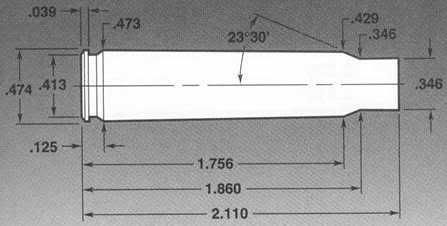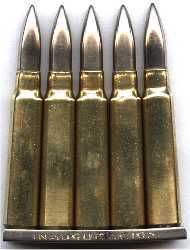 Wonderful things are these small ring Mauser rifles. Perfect for sporting purposes and not at all as clubby as the large ring Mausers. Even the G33-40 seems to pale in comparison. And boy are they a throwback to the heady days of the late colonial period. (Shown here is a standard Cavalry carbine)
Wonderful things are these small ring Mauser rifles. Perfect for sporting purposes and not at all as clubby as the large ring Mausers. Even the G33-40 seems to pale in comparison. And boy are they a throwback to the heady days of the late colonial period. (Shown here is a standard Cavalry carbine) My first 7.65x53mm rifle was an Argentine 1891 rifle somebody had converted to a sporting rifle. I had the barrel recrowned, installed a Foolproof receiver sight and Fajen stock along with some other cosmetic improvements. It went down the road at divorce time and I missed it. Many years later, a close friend knowing of my love/admiration of the 1891 action and 7.65x53mm cartridge initiated a trade which brought an Engineer carbine into my clutches.
My first 7.65x53mm rifle was an Argentine 1891 rifle somebody had converted to a sporting rifle. I had the barrel recrowned, installed a Foolproof receiver sight and Fajen stock along with some other cosmetic improvements. It went down the road at divorce time and I missed it. Many years later, a close friend knowing of my love/admiration of the 1891 action and 7.65x53mm cartridge initiated a trade which brought an Engineer carbine into my clutches.The 7.65x53mm Argentine was initially developed for the Belgian version in 1889 and its ballistics are similar to that of the .303 British and .30-40 Krag. The 7.65x53 Mauser cartridge was adopted by the Belgian military around 1889, so the 7.65x53 is commonly known as the 7.65 Belgian Mauser. Shortly thereafter the 7.65x53 was adopted by several South American countries, including Argentina, so it is also known as the 7.65mm Argentine, particularly in North America. The 7.65x53 has a rim diameter of .474" and a case length of 53mm (2.09"). 7.65mm translates to .303 caliber in English usage, and the 7.65x53 uses the same .311-.312" diameter bullets as the .303 British.
 What you really have, when loaded with 150-180 gr. bullets, is a hot .300 Savage or low end .308 Winchester. Even the case form is similar. In the light carbines, such as I have and prefer, it has been said to kick "like two mules". I don't think so, at least no more so than such a load from a .308 Winchester in any other 7½ pound rifle. Steel buttplate and all and I don't think it is uncomfortable to shoot. In combat or on game there would have been no problems, you simply would not notice.
What you really have, when loaded with 150-180 gr. bullets, is a hot .300 Savage or low end .308 Winchester. Even the case form is similar. In the light carbines, such as I have and prefer, it has been said to kick "like two mules". I don't think so, at least no more so than such a load from a .308 Winchester in any other 7½ pound rifle. Steel buttplate and all and I don't think it is uncomfortable to shoot. In combat or on game there would have been no problems, you simply would not notice.Of course the original load was a 215 gr. jacketed bullet which left the muzzle of the 29" barreled rifle at about 2100 fps. I soon found that the 215 gr. Woodleigh JRN will shoot to the sights when so loaded but, of course, it is a bit slower from the carbine, doing about 2000 fps. Interestingly, most loads including commercial Argentine soft-point ammo will shoot usefully close to the sights are reasonable ranges. Range is thus really more limited by one's eyes and the late 19th century sights.
 Fortunately brass is readily available. One can buy Norma or Hornady brass (also marketed by Grafs and Sons) or reform any longer cartridge using the .30-06 case head. Be aware that cartridges reformed from the shorter cartridges such as the 8x57 might have incorrect body taper when first formed and not be held properly by the magazine.
Fortunately brass is readily available. One can buy Norma or Hornady brass (also marketed by Grafs and Sons) or reform any longer cartridge using the .30-06 case head. Be aware that cartridges reformed from the shorter cartridges such as the 8x57 might have incorrect body taper when first formed and not be held properly by the magazine.Bullets are the same as those used for the .303 Brit and 7.7 Jap (and maybe for the 7.62x54mm Russian) and are .311-.312" in diameter. For the carbines the 215 gr. bullets would be most correct but the 180s and 150s will work. Standard large rifle primers will suffice for any appropriate powders. It is a simple thing to use one's favorite powders for this class cartridge to move 150 gr at 2700 fps, 180 gr. at 2500 fps, or 215 gr. at 2100 fps.
LINKS:
Robb J's ARGENTINE M1891 "ENGINEER'S CARBINE"
Hogdon Data
No comments:
Post a Comment
I only ask that you keep it clean and not spam readers. Thanks.